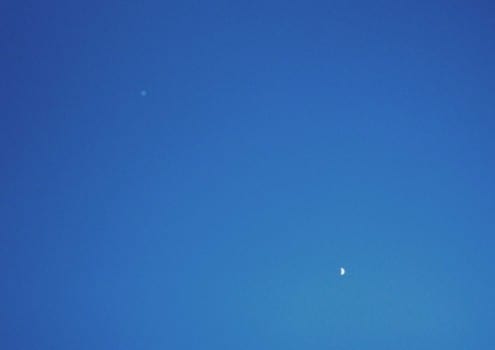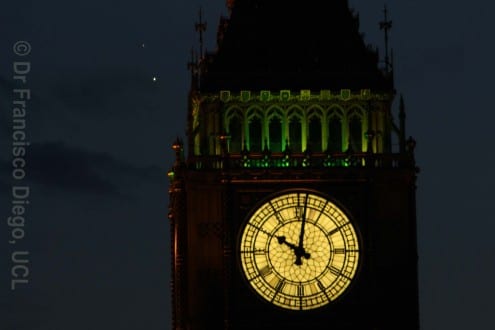Venus and Jupiter
By Oli Usher, on 30 June 2015
If you get a chance tonight (or in the next few nights), take a look at the Western horizon just before or after sunset. Two bright ‘stars’ will be following the Sun down. These are Jupiter and Saturn, and they are unusually close together just now from our perspective. (In reality, Venus is close to us, between Earth and the Sun, while Jupiter is in the outer Solar System far beyond).

(Click to enlarge picture)
Jupiter and Venus as they look to the naked eye. Photo by Francisco Diego (UCL Physics & Astronomy), taken from Ruskin Park, London, last night.
The picture above (click to enlarge), taken by UCL’s Francisco Diego, shows roughly what the view looks like to the naked eye.
Francisco is a star of astronomy outreach at UCL – as well as teaching our students, he works closely with schools and runs the annual Your Universe festival.
Through a pair of binoculars or a low-powered telescope it’s even more impressive: you should be able to see Venus as a crescent (like a miniature moon), and you may see a few faint dots either side of Jupiter: the gas giant’s four largest moons, Io, Europa, Ganymede and Callisto.

Jupiter and Venus as seen during daylight at 7pm by Francisco Diego (UCL Physics & Astronomy) with magnification similar to an ordinary pair of binoculars – they should be even clearer once the Sun has set.
Added 1 July:
There was a bit of cloud last night, but the planets were visible for a time. Here’s an amazing shot captured by Francisco on the night of 30 June (click the photo to enlarge):

Venus and Jupiter by Big Ben on 30 June. Photo credit: Francisco Diego (All rights reserved, not to be reproduced without permission)
Tonight, they will still be visible but a touch further apart, and crescent Venus and the disk of Jupiter will have swapped positions as they continue their journey through the Solar System.
 Close
Close


